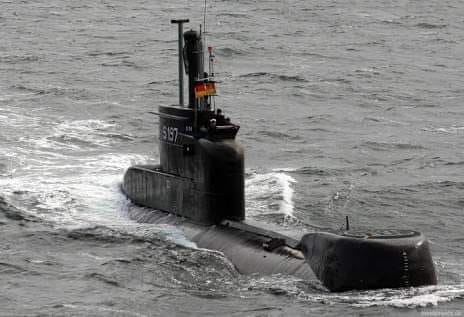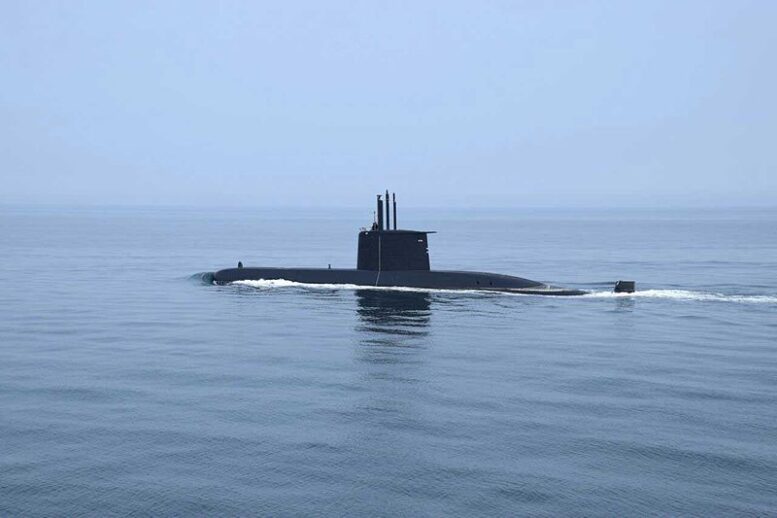I am sharing an article I had written six years ago, now with revisions as further information came to light in supporting the Philippine Navy’s acquisition of Submarines through a historical perspective.
INTRODUCTION. On 22-September-1914, in the cold choppy waters of the North Sea, a few miles from the coast of the Netherlands in less than 90 minutes, HMS Aboukir, HMS Cressy and HMS Hogue were sunk by SMS U-9 under the command of Captain-Lieutenant (Lieutenant Senior Grade) Otto Widdegen. The three ships were sailing line abreast on the turbulent seas when a German torpedo struck. A total of 1,136 lives perished. The sudden attack struck a chord on both the British and German Navies, as it dawned the effect of Submarine Warfare.
On 30-July-1945, Philippine Sea 14 minutes after midnight, six Japanese type 95 torpedoes hit and sunk the Heavy Cruiser USS Indianapolis (CA-35) where 300 out of 1,196 officers and crew went down with the ship.
On 13-July-1901 – August 1950, China coast, La Perousse Strait and Formosan waters, the early days of the Korean War, the USS Catfish (SS-339) and USS Pickerel (SS-524) make way towards a reconnaissance of the China coast to monitor the movement of the Communist Naval Forces who might open a second front on Taiwan.
On 20-December-2023, Scarborough Shoal, a platoon of Philippine Combined Reconnaissance Teams (CRTs) jumped off from a PAF C-130J on the warm waters of the West Philippine Sea, a derring-do attitude even for the elite soldiers with nothing but the blackness of the water below welcoming them until the massive black silhouette of BRP Vicente Catalan (U-198) emerged from the depths to quietly recover them from their descent and nimbly embraced them from the prying eyes of the enemy.
Three real world actions and one fictional scenario in four different timeframes with a solitary focus –the Submarine.
The first, during the Great War, a time when the undersea weapon was still in its infancy with early false starts, crude tactics and strategy, and where most of the major naval powers had yet to decide the role of the submarine in its fleet and conflict.
The second, a tragic event in the closing days of World War II which focuses on tactics, manoeuvres, and intelligence.
Third, a typical characteristic to serve as the eyes and ears of the fleet but also have the chance to deal a first blow to the enemy and lastly, in utilizing the craft’s stealth in inserting troops into hostile enemy territory.
More than a thousand articles and essays have already been written on the essence of the submarines and this article would be no different but would rather seek to explore the characteristics of a submarine that makes it a compelling weapons platform and discusses how they contribute to sea denial and maritime power projection for the world’s second largest archipelago.
HISTORICAL PRECEDENTS. It has been eight decades and seven years since it was envisioned to be a part of the country’s future naval force the Offshore Patrol (OSP). During the 1934 Philippine Constitutional Convention, Colonel Blas Villamor, a Delegate of the Province of Apayao, proposed that apart from Rapid Cruisers, a squadron of Torpedo Boats and Submarines be procured to serve as the offensive arm of our planned naval unit. On 09-February-1939, the OSP was activated but it was only the former that was procured and became part of the fleet.
The exploits of the OSP during the Pacific war is well recorded in our Naval and Maritime history and the story of the courage of its officers and men serves for us to emulate them, but what might have taken place if the OSP had submarines during the early days? Would the Japanese landing in Lingayen be any different?
It was in the late 50s and early 60s that the Philippine Navy begun its quest for Submarines, specifically for 3 diesel submarines coinciding with the transfer for PBY Catalina Flying Boats earmarked for the nascent Philippine Naval Aviation Unit but later turned over to the Philippine Air Force. They were used heavily by Sulu-Air Task Group (SATAG) during the tumultuous days in Mindanao. However, none of the submarines requested followed.
Another major item of interest during the 5-year AFP Modernization Plan from 1977-1981 was the acquisition of Submarines specifically conventional powered attack submarines in the class of the German Type 206, and 2 Training Submarines of the SST type.
The SST types were to be inducted in 1977 with 1 unit and another in 1979, while the Type 206s were from 1978 to 1981, one Submarine each year. Had these materialized, the Philippine ASW Triad could have started and strengthened its foundation.
Fortunately, the PAF PBY Catalina’s worked well with the Philippine Navy’s 4 Harbour Defence Motor Launches (HDML) – all Ex Royal Navy but came from the Royal Australian Navy and were Australian built. The HDMLs have Radars and form part of our Anti-Submarine Force along with our 16 Submarine Chasers.
The Training Submarine in question might have been the US SST Type 1 or the Ex USS Mackerel which was decommissioned in 1973 as no other SST types were in operational service at that time.
Several years later, in 1998, the concept paper for a Submarine capability was endorsed by the then Flag Officer in Command (FOIC, PN) VADM Eduardo Ma R Santos AFP to the Department of National Defense which was received positively. A core group was established as early as 1999 during the incumbency of then FOIC PN VADM Luisito Fernandez AFP.
It was also in this period that selected Filipino Naval Officers were sent for schooling overseas namely in the United Kingdom, with visits to Germany and Pakistan; the latter operates the French-made Agosta Class Submarines. It was during this period that the Philippine Navy looked into the Shallow Water Attack Type (SWATS) submarine.

PNS Hashmat of the Pakistan Navy. She is an Agosta Class Submarine which was looked into by the Philippine Navy during the 1990s. Photo by Tasnim News Agency.

U-18 (S-197) of the German Navy, a Type 206 Submarine. Photo credit: https://www.seaforces.org/marint/German-Navy/Submarine/Type-206-class.htm accessed 09-Nov-2018.
By the advent of President Benigno S Aquino III administration, coinciding with the debacle with China on the South China Sea, along with the desired force mix program, the establishment of a Submarine arm again surfaced with the projected acquisition of 3 vessels. Related to this matter was the establishment of a Submarine Group for the Philippine Navy in 2013.
Several changes on the Desired Force Mix program has occurred, specifically on the requirements for undersea warfare under the Maritime Force projection package in which we envisaged to acquire two diesel electric submarines by 2018 on the 2nd horizon, and four units on the 3rd horizon. In the subsurface domain, the Philippines continued participation on allied naval exercises geared for submarine related operations; seminars and shipriders similar to the program with the USS Cheyenne would not only benefit us but develop interoperability with our allies.
OPERATIONAL FEATURES. Stealth, Freedom of Movement, Flexibility and Lethality are the primary characteristics of the craft, and when used collectively it is a potent weapon on its environment.
Covertness is the essence of the submarine, paired with the geographical features of the country which it could use to its advantage through mastery of terrain, coves, bays and shallow waters. Stealth is synonymous with the craft’s freedom to sail from one point to another regardless of poor sea and weather conditions. Flexibility on the other hand is still identical with the first two as it could readily assume a different role as noted on the third scenario above. Ultimately, the array of weapons, sensors and special operators onboard can do some lethal punches on the enemy.
SEA DENIAL and FORCE PROJECTION. Several historical examples of Sea Denial can be cited. Foremost was during the Falklands War of 1982 and the 1971 India-Pakistan War, the mere presence of HMS Conqueror and PNS Hangor had effects on both the Argentinean and Indian fleets.
Scenario 3 and 4 above is a classic case of force projection that would be vital for the country and the navy in dealing with internal and external security operations such as infiltration into hostile shores and convoy escort duties.
CONCLUSION. As vindicated above, though considered an offensive weapon, the introduction of a submarine flotilla in the Philippine Fleet would be a vital factor that should have been pursued early on based on historical background literature and familiarity with the submarine exploits specifically during World War II.
The confrontational strategic environment of the South China Sea, piracy, and maritime terrorism, among others, make it imperative for the Philippines to acquire submarines. The primary imperative of protecting the country’s strategic location in the Southeast Asian region is further validation for a Philippine Submarine Arm.
Endnotes:
- The Philippine Navy 1898-1998, by Professor (Commodore) Regino P Giagonia, HPN
- Various issues of the Philippine Navy Journal and Ocean Log during the 90’s with articles on Submarines, authored by then CDR Tomas Baino PN (GSC) and LT Acosta PN.
- http://www.globalsecurity.org/…/world/pakistan/hangor.htm (accessed 04 December 2016)
- http://www.2worldwar2.com/submarines.htm (accessed 27 November 2016)
- An Operational Analysis of United States Submarine employment in the Korean War, by LCDR Gregory M Billy USN, 1994.
- In Harm’s Way: The Sinking of the USS Indianapolis and the Extraordinary Story of Its Survivors, by Doug Stanton, Paperback, April 2001.
- Indianapolis: The True Story of the Worst Sea Disaster in U.S. Naval History and the Fifty-Year Fight to Exonerate an Innocent Man, by Lynn Vincent and Sara Vladic, Trade Paperback, July 2018.
- Left for Dead: A Young Man’s Search for Justice for the USS Indianapolis, by Peter Nelson and Hunter Scott, May 14 2002.
- Fatal Voyage: The Sinking of the USS Indianapolis, by Dan Kurzman, 1990, Paperback.
- A Naval History of World War One by Paul G Halpern, Naval Institute Press, 1994.
- Conway’s All The Worlds Fighting Ships 1947- 1995, by Antony Preston.
- Maritime Review, July-August 2016 issue.
- http://nationalinterest.org/…/the-philippines-wants… (accessed 23 November 2016)
- http://thediplomat.com/…/the-philippine-navys…/ (accessed23 November 2016)
- http://maxdefense.blogspot.com/…/clarifications-on… (accessed 23 November 2016).
